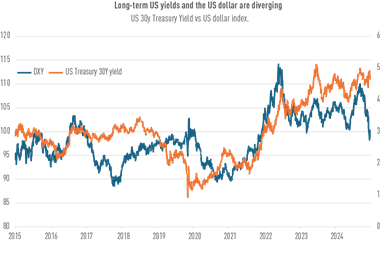In the late 1990s, as Asia’s economies unraveled, foreign investors got the opportunity to gain control of the region’s closely guarded companies and assets for the first time. Stuart Lucas, a fourth-generation beneficiary of the Carnation wealth, was one of these earliest investors.
That first investment, made via a private equity fund in 1998, has since been liquidated with “a small return, not much”. But Lucas is not one who takes a short-sighted approach to investing his family’s assets.
Over the next 11 years, Lucas built his knowledge of and contacts in Asia much the same way his maternal great-grandfather, EA Stuart, built the Carnation company — with meticulous patience.
Today, Asian assets make a substantial portion of the family’s portfolio. About 16% is invested in alternative assets in Asia, primarily in private equity in China and India and a smaller proportion in hedge funds.
The rest of the portfolio has 18% in US equity; 11% international long-only equity which is again substantially weighted towards Asia; 3% in investment real estate of which all is in the US; 18% in distressed debt; 21% in US and European private equity; 5% in venture capital; and 8% in energy as a cyclical element.
Unrealised gains from the Asian investments are about 18% over the five years ending December 2008 even with the market swoon in 2008.
“I would consider investing more in Asia. I expect returns in Asia to continue to be higher (than in US or European markets), so our asset allocation to Asia will also increase, over the long run,” he says.
“We believe that China and India are likely to remain politically stable. The Chinese have a high savings rate, their income is rising rapidly and they will spend more. The general prosperity will drive growth.”
Americans, on the other hand, must spend less and save more. At the same time, “our population is not increasing quickly, GDP growth will be slow and corporate profitability will grow sluggishly. Going forward, it’s hard to see corporate profitability going higher than the last cycle and may in fact grow more slowly than GDP. Interest rates might also rise. This combination means that the US stock market may go sideways for the next five years,” Lucas says.
He considers India’s low private-sector debt to be positive, although China’s leverage level is of some concern.
Earlier this year, in an attempt to resuscitate the economy, Chinese banks were encouraged to increase lending. BNP Paribas estimated that Chinese banks made Rmb7.4 trillion in renminbi-denominated loans in the first half of 2009, which is about 45% of the period’s GDP. The Industrial and Commercial Bank of China, for instance, expanded its loan books by 19% in the first half of 2009. Now, investors are concerned that a non-performing loan volcano is gathering beneath the veneer of relative prosperity.
Aside from the standard macroeconomic and other risks associated with investing in Asian private equity, liquidity is of particular concern to Lucas. “Asian markets are not as well-developed, so sometimes an investment cannot be sold for 10 or 20 years. Also, currencies are not freely tradable in some instances,” Lucas says.
The risks are manageable, he adds. Liquidity risk can be managed via a growing secondary market, where it is possible to sell an entire limited partnership interest.
Fund manager risk is also on his watch list. “We choose managers who have a personal stake in the investment and who have low debt structures. In these cases, there are no third parties who can force us to sell the investment at the wrong time, which is worse than not being able to exit freely,” Lucas reasons.
Although corporate transparency, governance and market processes in Asia have improved significantly since the Asian crisis, they are not yet comparable with standards in developed markets. But Lucas prefers to have a few hurdles. “If it’s too easy to invest in Asia, more money will come in and push down returns, so some difficulty is not bad,” he surmises.
He does suggest a subtle but potentially powerful improvement: “Asian companies can reinvest excess profits into innovation. That is not necessarily technological innovation alone. Innovation can mean managing and inspiring people in ways that encourage them to become more effective contributors to the business and the economy. This type of innovation has a greater multiplier effect and can contribute greatly to Asia’s economic base.”














No comments yet